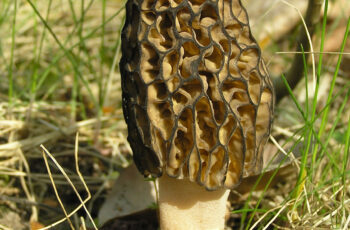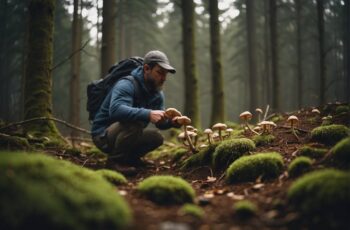Embarking on the quest for morel mushrooms is a rite of spring for foraging enthusiasts and nature lovers alike. As the snow recedes and the forest floor begins to thaw, the hunt for these elusive fungi stirs a sense of adventure in the hearts of many. The allure of morels lies not only in their distinctive taste but also in the joy of the hunt. Unlike other treasures, morels don’t give up their hiding spots easily, popping up under certain trees and in specific soil conditions, adding a layer of mystery to your foraging activity.
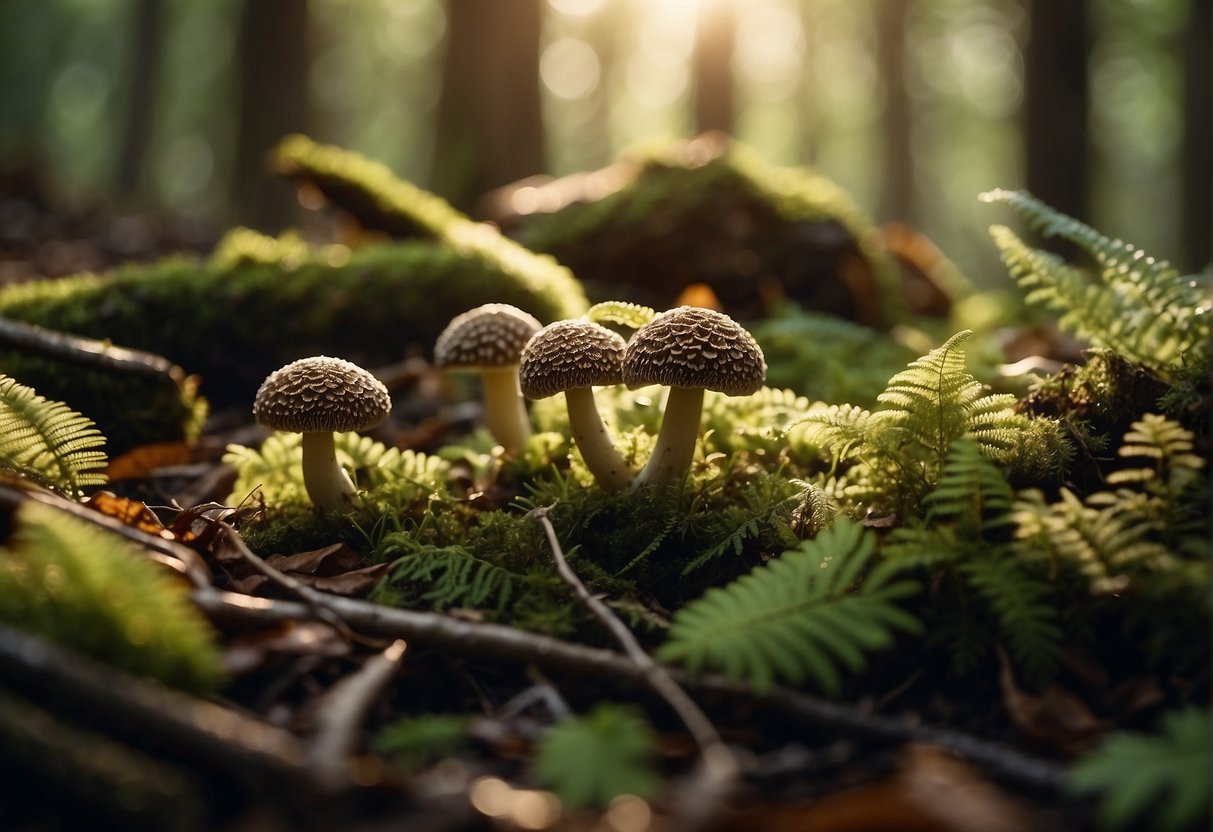
Knowing where to look for morel mushrooms can transform your foray into the woods from a mere walk to a fruitful treasure hunt. These fungi favor the dappled sunlight of the forest just after the last frost, thriving in the aftermath of fires or in the rich soils of dying elm, ash, or apple trees. Patience, a good eye, and a bit of local knowledge are key tools in tracking down morels. Whether you’re a seasoned hunter or a curious newbie, understanding the habitat and patterns of morels will elevate your chances of coming home with a basketful of earthy gold.
Key Takeaways
- Morel mushroom hunting integrates the excitement of foraging with an appreciation for nature’s subtleties.
- Identifying proper habitats and seasonal patterns is crucial for locating these prized fungi.
- A successful hunt relies on patience, observation, and a respect for the environment.
Understanding Morel Mushrooms
When you venture into the woods in search of the elusive morel mushroom, you’re engaging with one of nature’s most intriguing edible treats. Their unique flavor and limited season make them a sought-after prize.
Biological Characteristics of Morels
Morel mushrooms (Morchella spp.) are easily distinguishable from other wild mushrooms due to their honeycomb-like appearance on the cap. Morels are hollow from stem to tip and come in a variety of colors including yellow, gray, and black. Their flavor is rich, nutty, and earthy, making them a delicacy in the culinary world.
Unlike false morels, which can be toxic and have a wrinkled or lobed cap, true morels are safe to eat after cooking. It’s crucial to know the difference for your safety.
The Lifecycle of a Morel Mushroom
Morels have a fascinating lifecycle that is intimately tied to their environment. The season generally ranges from early spring to late June, depending on your geographic location and the climate. During this time, the underground part of the mushroom, the mycelium, sends up fruiting bodies – the morels you see and pick.
- Growth: It often occurs in areas disturbed by floods or fires, with morels sometimes fruiting prolifically the following year in these regions.
- Lifecycle stages:
- Spore dispersal: Morels release spore when mature which are carried by wind.
- Mycelium growth: Spores settle in a suitable habitat and develop into an underground network.
- Fruiting: The right temperature and moisture conditions prompt the mycelium to produce the mushrooms above ground.
Finding morels requires patience and a keen eye, but the reward of their unmatched flavor makes the hunt well worth it, not to mention the joy of connecting with nature in the process. Remember, always positively identify morels before consumption to avoid mixing them up with inedible or harmful varieties. Happy foraging!
Ideal Conditions for Morel Growth
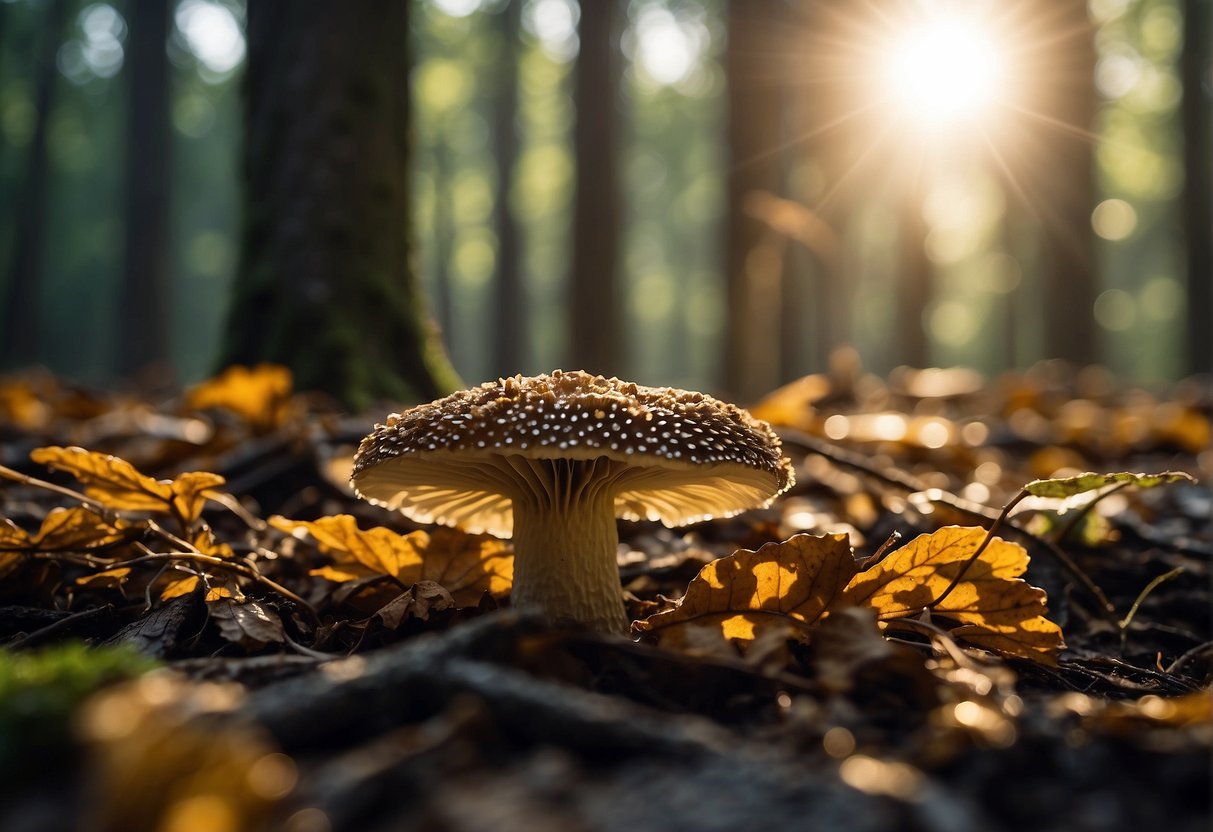
When you’re gearing up for morel mushroom hunting, knowing the specific environmental factors that encourage their growth is crucial. Here, you’ll learn about the soil and temperature preferences, the symbiotic relationship with certain trees, and how weather patterns influence the emergence of these sought-after fungi.
Soil and Temperature Factors
Morels are particular about where they pop up, and spring is a critical time for hunters like you. You should look for areas where soil temperature consistently stays between 50-55 degrees Fahrenheit—this is the sweet spot for morel growth. Typically, these conditions occur in early spring, shortly after the snow has melted away. If you want to take the guesswork out of it, consider using a soil thermometer to confirm your site’s readiness.
Understanding the Role of Trees
Morels have a well-known association with certain types of trees, making the presence of these trees a good indicator of where to hunt. Elm, ash, and cottonwoods are particularly favorable hosts for morels, especially if the trees are older or dying, as they provide the necessary nutrients for growth. Keep your eyes peeled for the distinctive bark patterns and branch structures of these species as you walk through the woods.
Weather Patterns and Morel Emergence
Not only do you have to consider the soil and trees, but also the weather patterns. Morels need a period of moist weather — a mix of rain and mild temperatures in the day and cooler temperatures at night, ideally daytime highs in the 70s and nighttime lows in the 50s, can lead to a fruitful hunt. Pay attention to recent weather trends, as a few days of hot or cold spells can stall morel development or make them more brittle.
Where to Hunt for Morels
Embarking on a morel mushroom hunting adventure requires knowledge of where these elusive fungi thrive. Your success hinges on identifying the right habitats and understanding land regulations.
Identifying Prime Morel Habitats
When searching for morel mushrooms, focus on forests with ample ground cover and a mix of tree species. South-facing slopes are often the first to warm in the spring, encouraging morel growth. Morels have mycorrhizal relationships particularly with ash, elm, and poplar trees. Look for areas where these trees are present. River bottoms are also favorable due to their moist soil conditions, but ensure the area isn’t too wet.
For elevation, morels can be particularly abundant at mid to high elevations in mountainous regions, following the receding snowline upwards as spring progresses. Keep a keen eye on burn areas, where morels often emerge the first few springs after a fire. Use this as a guide, but remember that each state may have different prime morel hunting conditions based on its unique climate and terrain.
Public Lands vs. Private Lands
When foraging for morels, it’s crucial to distinguish between public land and private land. Public lands, such as national forests or state parks, often provide a vast area for mushroom hunting. However, always check local regulations regarding foraging, as some areas may have restrictions or require permits.
On private land, seek permission from the landowner before you venture out. This not only ensures legal compliance but also builds trust and respect within the community. Remember, trespassing can lead to heavy fines or worse, so always secure the necessary access rights before you begin your morel mushroom hunting.
Safety and Ethics of Morel Mushroom Hunting
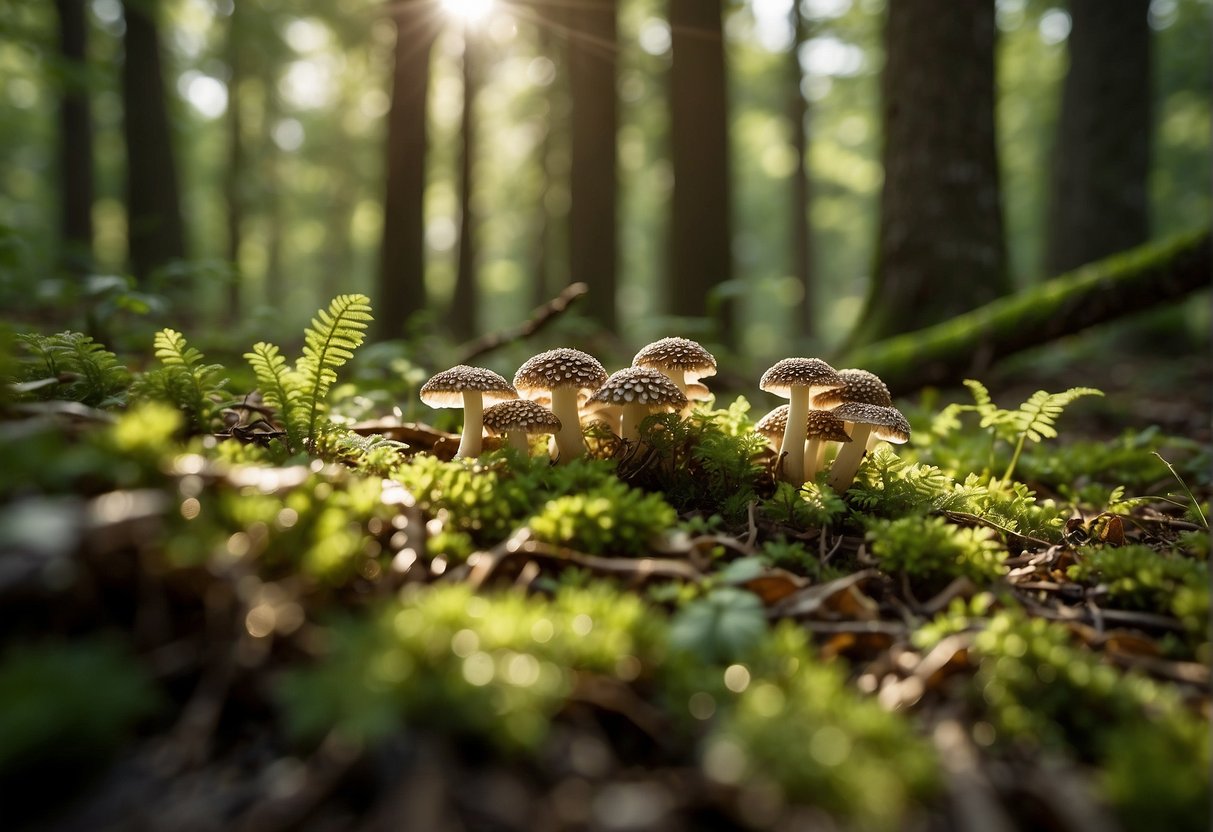
Before you venture into the woods in search of the coveted morel mushrooms, being aware of safety and ethical foraging is crucial. Not only should you be skilled at identifying edible mushrooms from their poisonous counterparts, but also mindful of foraging practices that preserve local ecosystems.
Avoiding Poisonous Look-Alikes
When hunting morel mushrooms, specifically the edible yellow morels, distinguishing them from their poisonous look-alikes is vital for your safety. False morels have a brain-like, wrinkled cap, while true morels feature a honeycomb appearance with pits and ridges. Begin by studying images and descriptions of edible morels versus poisonous species and consider carrying a field guide with you. Remember that consuming the wrong kind can result in severe illness, so when in doubt, leave it out.
Respectful Foraging Practices
Your foraging ethics play a big role in maintaining the sustainability of morel populations and respecting fellow foragers. First, ensure you’re aware of local regulations and obtain necessary permits for foraging on public lands. This might include staying within limits for personal use and not selling your finds without a commercial permit.
- Do: Harvest selectively, using a mesh bag to permit spore dispersion.
- Don’t: Overharvest in a single area or disturb the surrounding flora and fauna.
It’s your responsibility to forage respectfully, making sure future generations can enjoy the thrill of hunting these seasonal delicacies.
Preparing and Enjoying Your Harvest
Once you’ve brought your bounty of morel mushrooms home from the forest, it’s essential to clean and store them properly before indulging in their unique earthy flavor.
Cleaning and Storage Tips
Cleaning Morels:
- Gently brush off any dirt using a soft brush or damp cloth.
- Rinse quickly under cold water if necessary, but don’t soak as they can become waterlogged.
- Short-Term: Place them in a paper bag and refrigerate for up to one week.
- Long-Term: For extended storage, morels can be dried in a dehydrator or oven set to the lowest temperature, then stored in an airtight container.
Cleaning and storing morels properly is crucial for preserving their distinct flavor and ensuring they remain a safe, edible mushroom to enjoy.
Culinary Ideas for Morels
The unique earthy flavor of morel mushrooms pairs excellently with a variety of dishes. Here are some ideas to elevate your culinary adventures:
- Morel Risotto: Incorporate sautéed morels into creamy risotto for a rich and savory dish.
- Steak and Morels: Complement the robust taste of steak with a side of buttery morels for a hearty meal.
Experiment with morel mushrooms to enrich your favorite dishes. Their versatility in the kitchen allows you to be as creative as you like—forge a connection with the forest in every bite.

